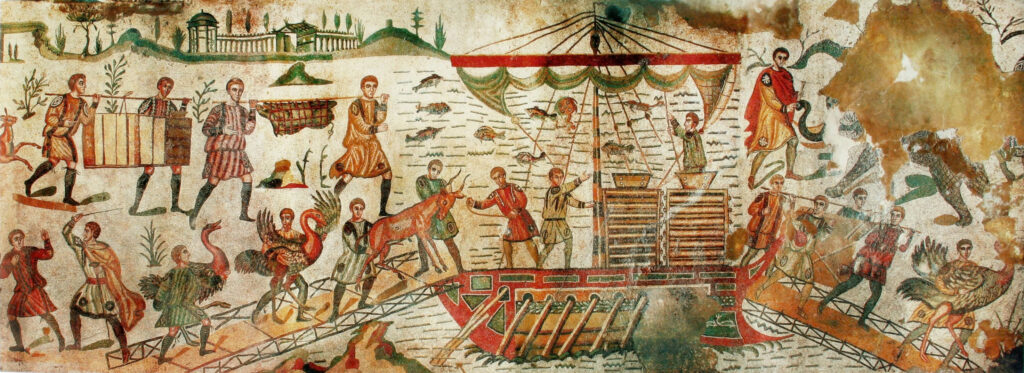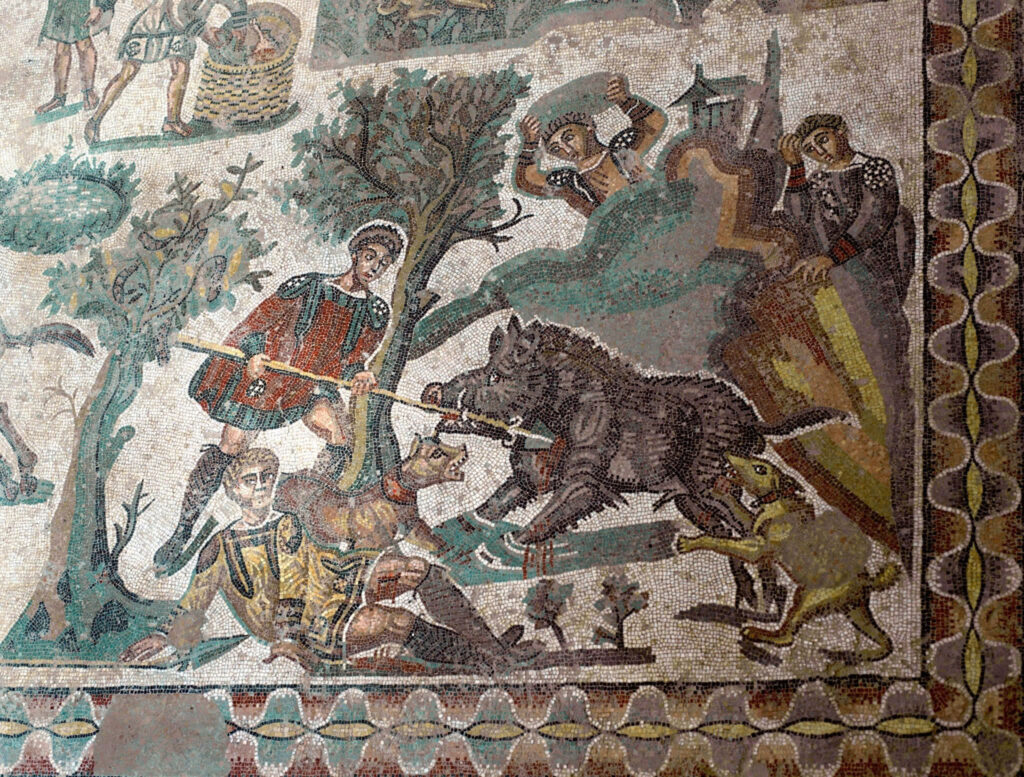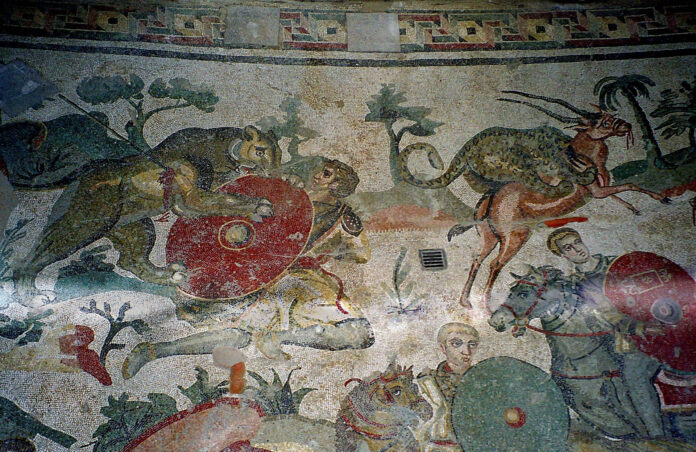Deep within the ancient walls of Villa Romana del Casale in Sicily lies one of history’s most captivating storytellers—a 60-meter masterpiece known as the Great Hunt mosaic. Dating back to the 4th century AD, this extraordinary artwork weaves together tales of Roman imperial ambition, exotic animal commerce, and the empire’s insatiable appetite for grand entertainment.
The Empire’s Thirst for Spectacle

The mosaic unfolds like an ancient documentary, revealing how Romans transformed entertainment into displays of imperial might. These weren’t mere games—they were carefully orchestrated demonstrations of power that captivated audiences across the empire. The detailed scenes showcase hunters pursuing magnificent beasts: majestic tigers, towering elephants, formidable rhinoceroses, and swift ostriches, all destined for the blood-soaked sands of Roman amphitheaters.
These spectacular events served a dual purpose beyond mere entertainment. They allowed the Roman elite to showcase their vast wealth while simultaneously demonstrating the empire’s ability to dominate nature itself. In venues like the iconic Colosseum, these captured creatures would face gladiators in deadly combat, creating unforgettable spectacles that reinforced Rome’s supremacy over both man and beast.
The Complex Web of Animal Commerce
Capturing the Exotic

The mosaic reveals the intricate network behind Rome’s exotic animal trade. Each panel tells part of a larger story—hunters strategically trapping their prey, the careful herding of captured beasts across makeshift bridges, and the methodical loading of these precious cargo onto waiting vessels. This wasn’t simply hunting; it was a sophisticated commercial enterprise that spanned continents.
Imperial Logistics at Work
The scale of this operation demonstrates the remarkable reach of Roman imperial power. Sourcing such rare and dangerous creatures from the distant corners of Africa, Asia, and beyond required extensive networks, substantial resources, and unwavering determination. These exotic animals became living symbols of the empire’s global influence—tangible proof that Rome could reach into the most remote territories and bring their treasures home.
The Shadow Side of Spectacle
Animal Welfare and Imperial Entertainment

While the mosaic celebrates Roman achievement, it also inadvertently documents a troubling chapter in the relationship between humans and animals. The captured creatures endured harsh conditions during their journey from freedom to arena, often facing brutal transportation methods and an uncertain fate. Their suffering was considered an acceptable price for public entertainment and imperial prestige.
Questions of Morality

This ancient artwork forces us to confront uncomfortable questions about the cost of entertainment and the ethics of exploiting nature for human amusement. The Great Hunt mosaic serves as a historical mirror, reflecting both the magnificence of Roman achievement and the moral compromises that accompanied their pursuit of spectacle.
Video
Artistic Mastery and Cultural Values
Technical Excellence

The mosaic’s artistic merit cannot be overstated. Every detail—from the vibrant colors that still dazzle viewers today to the lifelike representations of both hunters and hunted—showcases the extraordinary skill of Roman craftsmen. The dynamic composition creates a sense of movement and urgency, drawing viewers into the drama of the hunt while demonstrating the sophisticated artistic techniques of the period.
Cultural Reflection
Beyond its aesthetic beauty, the mosaic functions as a cultural document that reveals fundamental Roman values. The emphasis on spectacle, the celebration of imperial power, and the manipulation of nature for entertainment all reflect a society that prized dominance, prestige, and the ability to transform distant resources into local marvels.
Lessons from Ancient Stones

The Great Hunt mosaic continues to speak to contemporary audiences, offering insights into both human ambition and its consequences. This remarkable artwork stands as a testament to Roman artistic achievement while simultaneously challenging us to consider the ethical implications of entertainment that comes at the expense of animal welfare.
Today, as we admire the technical mastery and historical significance of this ancient masterpiece, we’re reminded that even the most magnificent human achievements often carry complex moral legacies. The Great Hunt mosaic remains not just a beautiful artifact, but a thought-provoking reminder of the delicate balance between human ambition and responsible stewardship of the natural world.

